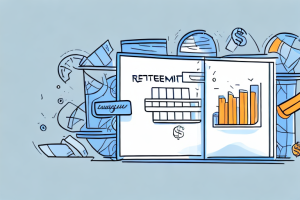Retirement planning can be a daunting task, especially when it comes to determining how much income your nest egg can generate. For many individuals, the magic number is often $1,000,000. But what exactly does this amount of money translate to in terms of retirement income? In this comprehensive guide, we will delve into the various factors that determine how much retirement income $1,000,000 can generate and provide strategies for maximizing and sustaining that income throughout your retirement.
Understanding the power of $1,000,000 in retirement planning
When you think about $1,000,000 in retirement savings, it may initially seem like an enormous sum of money. However, it’s important to consider that your retirement could potentially last for several decades. Inflation, changing expenses, and other factors need to be taken into account when determining the income that your nest egg can generate.
While $1,000,000 may seem like a substantial amount, it’s crucial to recognize the significance of compound interest in retirement planning. By investing your savings wisely and allowing your funds to grow over time, you can significantly increase the income generated by your $1,000,000 nest egg.
Unveiling the secrets behind generating retirement income with $1,000,000
Generating retirement income from $1,000,000 requires careful consideration of various factors. One of the main elements is the withdrawal rate. The withdrawal rate refers to the percentage of your savings that you withdraw each year to cover your living expenses in retirement.
To ensure a sustainable income, experts often recommend following the 4% rule. According to this rule, you withdraw 4% of your portfolio’s value in the first year of retirement and adjust the amount for inflation in subsequent years. By adhering to this rule, you have a higher likelihood of not depleting your savings too quickly and ensuring a steady income throughout your retirement years.
A comprehensive guide to making your $1,000,000 last in retirement
While the 4% rule is a widely accepted guideline, it’s important to remember that everyone’s financial situation is unique. Your specific circumstances, including your desired lifestyle, healthcare needs, and existing sources of income, may require a different approach to determine how much income can be generated from your $1,000,000 nest egg.
To make your $1,000,000 last in retirement, it’s crucial to create a comprehensive financial plan that considers your anticipated expenses, investment returns, and potential risks associated with market fluctuations and inflation. Consulting with a financial advisor who specializes in retirement planning can provide valuable guidance in navigating these complexities and ensuring the longevity of your retirement income.
Exploring the different factors that determine retirement income from $1,000,000
Several factors influence the amount of retirement income that $1,000,000 can generate. One such factor is your intended retirement age. The earlier you retire, the longer your savings must last, and thus, the lower the annual income you can expect to generate from your nest egg.
In addition to retirement age, your investment strategy plays a vital role in determining retirement income. A conservative investment approach may provide more stability but may generate lower returns, resulting in a reduced income. On the other hand, a more aggressive investment strategy may yield higher returns, but it also comes with increased volatility and potential risk.
Furthermore, your overall financial situation, including any additional sources of income such as Social Security or pensions, will impact the amount of income your $1,000,000 can generate. It’s essential to consider all these factors and work with a financial advisor to tailor a retirement plan that aligns with your specific circumstances and goals.
The impact of inflation on retirement income from a $1,000,000 nest egg
Inflation is an important consideration when estimating how much income your $1,000,000 can generate in retirement. Over time, the cost of living tends to increase due to inflation, which erodes the purchasing power of your savings.
Although it’s not possible to predict future inflation rates, it’s generally recommended to factor in an average inflation rate of 3% when calculating your retirement income needs. By accounting for inflation, you ensure that your purchasing power remains relatively consistent throughout your retirement years.
Strategies for maximizing retirement income with a $1,000,000 portfolio
While the amount of retirement income your $1,000,000 can generate is influenced by various factors, there are strategies you can employ to maximize your income potential.
One such strategy is diversification. By spreading your investments across different asset classes and sectors, you can reduce the impact of market volatility and increase the potential for sustained returns. Additionally, regularly reviewing and rebalancing your portfolio can help ensure that your investments align with your risk tolerance and market conditions.
Another strategy to consider is tax optimization. By utilizing tax-advantaged retirement accounts, such as Roth IRAs or 401(k)s, you can potentially minimize the amount of taxes paid on your withdrawals, allowing more of your retirement income to be retained.
Diversification: How it can help you generate steady retirement income with $1,000,000
Diversification is a key component of any successful investment strategy, especially when it comes to generating steady retirement income from a $1,000,000 portfolio. By diversifying your investments across different asset classes, such as stocks, bonds, and real estate, you can potentially reduce the impact of market volatility on your income stream.
When one asset class underperforms, another may perform well, helping to offset any losses and maintain a more consistent income. Diversification also allows you to take advantage of different market conditions. For example, during periods of economic growth, stocks may provide higher returns, while during economic downturns, bonds may offer more stability. By diversifying, you can benefit from these market dynamics, potentially increasing the overall income generated by your $1,000,000 portfolio.
Balancing risk and reward: Ensuring a sustainable retirement income with $1,000,000
When planning for retirement, it’s essential to strike a balance between risk and reward. While investments with higher potential returns may seem enticing, they often come with increased volatility and uncertainty. On the other hand, more conservative investments typically offer stability but may yield lower returns.
A balanced approach that aligns with your risk tolerance and financial goals is crucial for ensuring a sustainable retirement income with a $1,000,000 portfolio. By diversifying and considering a mix of asset classes, you can mitigate risk without sacrificing potential returns. It’s also important to regularly review and adjust your investment strategy as you progress through retirement to adapt to changing economic conditions and align with your income needs.
The role of investment returns in determining retirement income from $1,000,000
The investment returns generated by your $1,000,000 portfolio play a significant role in determining your retirement income. When calculating your retirement income needs, it’s essential to consider the historical average returns of various asset classes and adjust for potential future market conditions.
On average, stocks have historically provided higher returns than bonds, but they also come with increased volatility. Bonds, on the other hand, have generally offered more stability but lower returns. By striking the right balance between these asset classes and potentially incorporating other investment vehicles, such as real estate or alternative assets, you can enhance your income potential while managing risk.
How long can you expect your $1,000,000 to last in retirement?
The longevity of your $1,000,000 in retirement depends on several factors, including your spending habits, investment returns, and life expectancy. Calculating how long your savings will last involves projecting your annual expenses and adjusting them for inflation, considering your expected investment returns and the withdrawal rate you choose.
While everyone’s situation is unique, it’s generally recommended to plan for a retirement spanning at least 30 years to ensure your savings can sustain you throughout the entirety of your golden years. By carefully managing your withdrawals, diversifying your investments, and monitoring your expenses, you can increase the likelihood that your $1,000,000 will last as long as you need it to.
Exploring different withdrawal strategies to optimize your $1,000,000 retirement income
Choosing the right withdrawal strategy is crucial in optimizing your retirement income from a $1,000,000 portfolio. While the 4% rule is a widely utilized guideline, there are alternative approaches that may better suit your individual circumstances.
One strategy worth considering is the systematic withdrawal approach. Under this method, you withdraw a fixed percentage of your portfolio each year, irrespective of market conditions. This strategy aims to provide a steady income stream while allowing your remaining investments to potentially grow over time.
Another option is a dynamic withdrawal strategy. This approach adjusts your withdrawals based on your portfolio’s performance and current market conditions. In years with strong investment returns, you may withdraw a greater amount, whereas during downturns, you may reduce your withdrawals to preserve your savings.
Tax considerations when generating retirement income from a $1,000,000 nest egg
When generating retirement income from a $1,000,000 nest egg, it’s essential to consider the impact of taxes. Different types of retirement accounts are subject to varying tax treatments, and understanding these nuances can help you minimize your tax liability and maximize your income.
Traditional IRAs and 401(k)s offer tax-deferred growth, meaning you don’t pay taxes on contributions until you withdraw the funds. On the other hand, Roth IRAs and Roth 401(k)s allow for tax-free withdrawals in retirement. By strategically managing your withdrawals and considering the timing and order of your distributions, you can potentially reduce your tax burden and optimize your retirement income.
The benefits and drawbacks of annuities for generating retirement income from $1,000,000
Annuities can be an attractive option for generating retirement income from a $1,000,000 portfolio. These financial products provide a steady stream of income over a specified period or for the rest of your life.
One of the main benefits of annuities is their ability to provide guaranteed income, which can provide peace of mind during retirement. They also offer tax advantages, as the growth within the annuity is tax-deferred until you begin receiving payments. Additionally, annuities can provide protection against market volatility, ensuring a stable income regardless of economic conditions.
However, annuities also have drawbacks that should be carefully considered. They can be complex products with fees and surrender charges, so it’s crucial to understand the terms and conditions before committing to an annuity contract. Additionally, annuities may not keep pace with inflation, potentially reducing the purchasing power of your retirement income over time.
Mitigating longevity risk: Planning for a long and prosperous retirement with $1,000,000
One of the key challenges in retirement planning is mitigating longevity risk – the risk of outliving your savings. To ensure a long and prosperous retirement with a $1,000,000 nest egg, it’s essential to consider strategies for managing this risk.
One approach is to incorporate longevity protection products, such as guaranteed income annuities or longevity insurance. These products provide a source of income that continues for life or activates after a certain age, ensuring that you have a steady income stream regardless of how long you live.
Additionally, regularly reviewing and adjusting your financial plan as you progress through retirement can help you adapt to changing circumstances and ensure that your $1,000,000 lasts as long as you need it to.
Tools and resources for calculating and projecting your retirement income with a $1,000,000 portfolio
Calculating and projecting your retirement income with a $1,000,000 portfolio can be complex, but several tools and resources are available to assist you in this process.
Online retirement calculators can help you estimate your future income based on factors such as your savings, anticipated expenses, and expected investment returns. These calculators provide valuable insights into the potential income your $1,000,000 can generate and allow you to make adjustments to your financial plan accordingly.
Additionally, working with a financial advisor who specializes in retirement planning can provide personalized guidance and support in calculating and projecting your retirement income. Their expertise and access to advanced financial planning tools can help you create a comprehensive plan tailored to your specific needs and goals.
Conclusion
In conclusion, while $1,000,000 may seem like a substantial amount of money, determining how much retirement income it can generate requires careful consideration of various factors. From understanding the power of compound interest to exploring different withdrawal strategies and tax considerations, there are many elements to take into account.
By creating a comprehensive financial plan, diversifying your investments, balancing risk and reward, and adjusting your strategy as needed, you can maximize and sustain your retirement income with a $1,000,000 portfolio. Remember, everyone’s financial situation is unique, so working with a financial advisor is highly recommended to ensure a successful and prosperous retirement journey.



